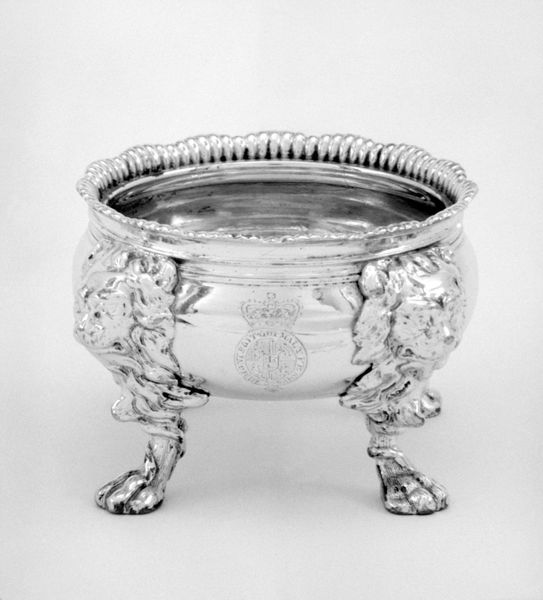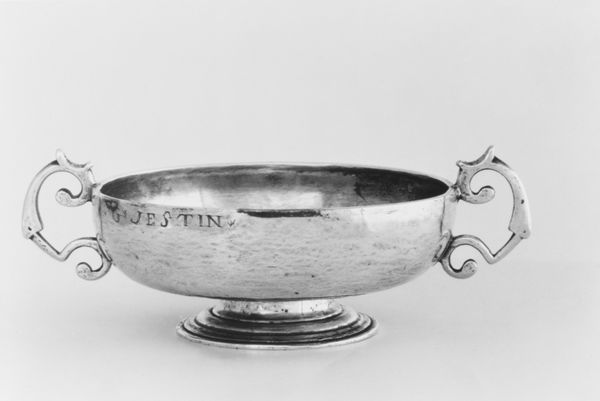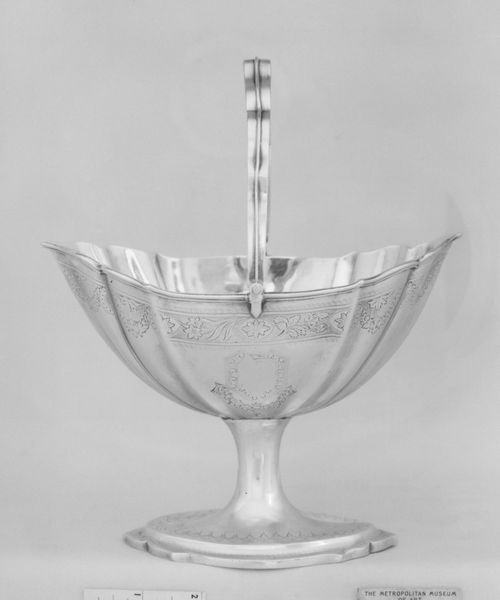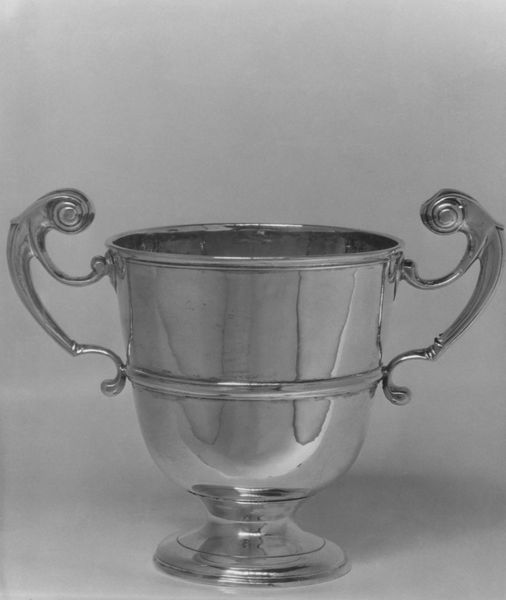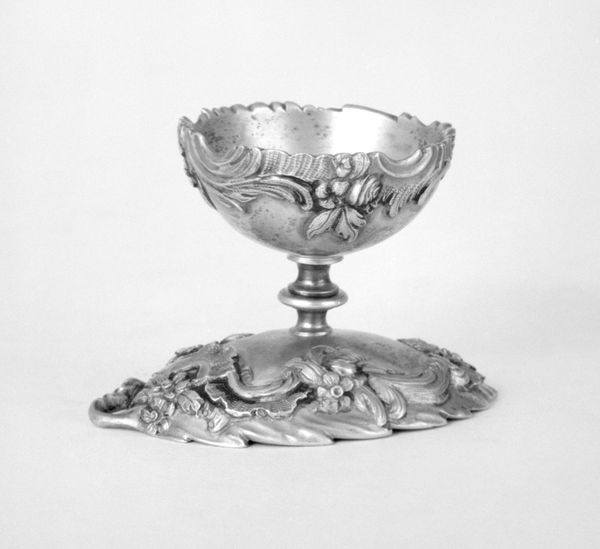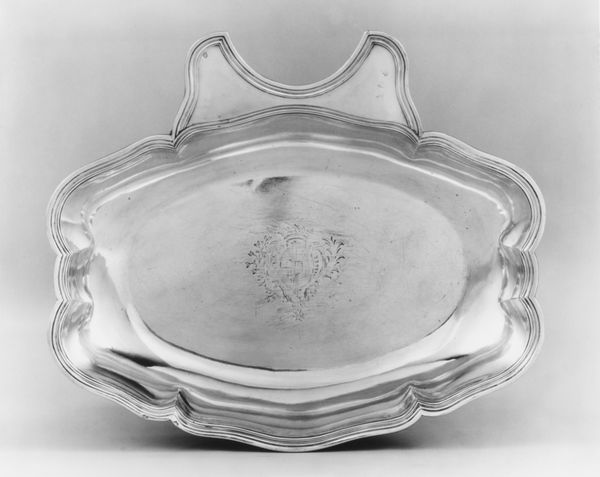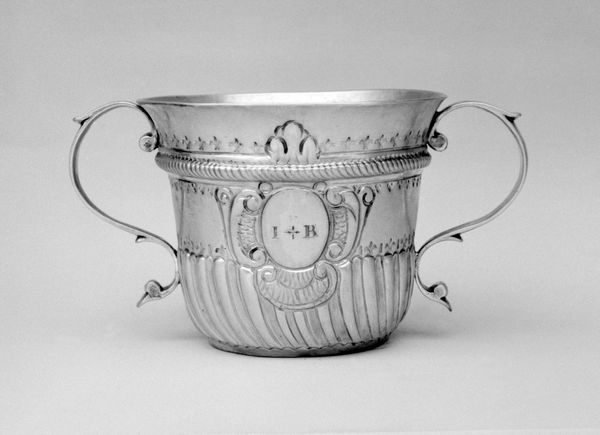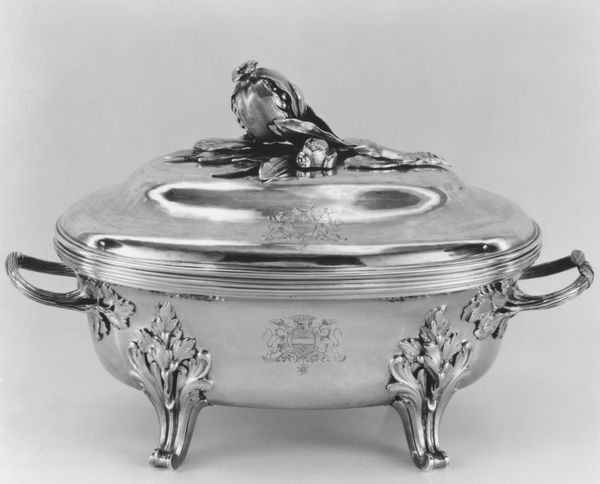
Dimensions: 2 3/4 × 5 1/8 in. (7 × 13 cm)
Copyright: Public Domain
Editor: Here we have "Bowl," made sometime between 1765 and 1790, artist unknown, crafted from silver. It's currently housed at the Metropolitan Museum of Art. I’m struck by how this bowl, seemingly simple, still has such presence. What symbolic meanings might be hiding within this piece? Curator: It’s more than a bowl, isn't it? It’s a vessel not just for material things, but also for cultural memory. Notice the Baroque style with its emphasis on ornamentation, its undulating rim and those stylized shell feet. Shells often represent pilgrimage, renewal, even baptism. Do you think those meanings resonated for its original owners? Editor: I hadn't considered the shell imagery consciously, but it makes sense within the era. Was silver also a symbolic choice? Curator: Absolutely. Silver, even the color itself, often signifies purity, wealth, and status. This bowl would have been a display piece, a symbol of prosperity and refined taste, reflecting the owner's social standing. Its surface, constantly reflecting light, served as a silent reminder of privilege. Editor: So the bowl is less about function and more about communicating a certain identity? Curator: Precisely! It’s a statement piece intended to project an image. Consider also the hollowness; what it contains becomes part of its message. Food, perhaps suggesting abundance; or, presented empty, implying restraint. Editor: I guess I saw it as just a pretty object, but I'm now seeing the embedded ideas about status, renewal, and cultural identity. Thanks for helping me look a little deeper. Curator: It’s about deciphering visual language, uncovering those latent meanings that continue to echo across centuries. It’s all a question of remembering to look.
Comments
No comments
Be the first to comment and join the conversation on the ultimate creative platform.
